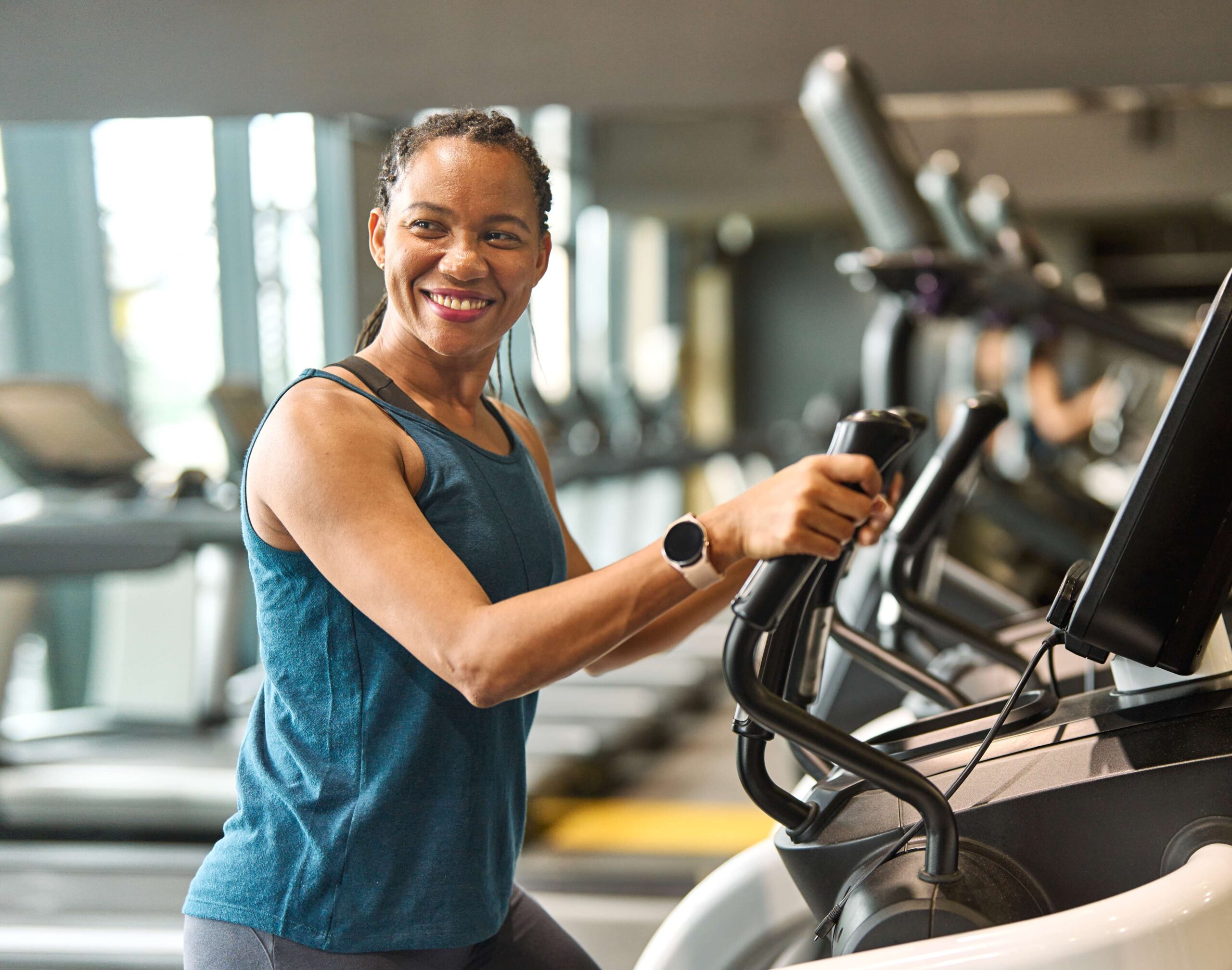Outfitting a gym takes more than instinct and a catalogue. The right equipment mix supports a wide range of training styles, user needs, and facility goals.
But with so many machines, weights, and accessories on the market, it’s easy to feel unsure about what’s essential, what fits where, and what to prioritise.
This guide breaks down gym equipment names, including the most widely used gym equipment by category. It explains what each piece does, how it’s typically used, who it benefits, and how it fits into different spaces, from small studios to university sports halls.
Use it as a reference to make confident decisions about your setup, stay ahead of user expectations, and create a gym environment that supports safe, effective training at every level.
Jump to Section
- Types of Gym Equipment
- Cardio Machines
- Strength Machines
- Free Weights
- Functional Training Equipment
- Recovery and Flexibility Equipment
- Planning Your Gym Layout with Equipment Zones
- FAQs About Gym Equipment
- How EZFacility Delivers on What Matters Most
Types of Gym Equipment
Gym equipment can be grouped into six core categories, each designed to support a specific type of training. Understanding these categories helps gym owners and facility managers make informed layout decisions, maintain a balanced offering, and track usage patterns more effectively across zones.
1. Cardio Equipment
Cardio equipment is built for heart-rate-elevating, endurance-based exercise. These machines are typically used for warm-ups, aerobic training, and general fitness improvement.
- Common examples: Treadmill, elliptical, rowing machine, spin bike, stair climber
- Muscles trained: Varies by machine, often lower body, core, and cardiovascular system
- Layout tip: Position near entrances or windows to encourage use and manage airflow
- EZFacility usage insight: Track peak usage hours and user types to optimise availability
2. Strength Equipment
Strength machines guide users through controlled movement patterns, making them ideal for safe resistance training. They’re especially useful in beginner or rehabilitation settings.
- Common examples: Leg press, chest press, lat pulldown, seated row, leg curl
- Muscles trained: Targeted muscle groups depending on the machine: push, pull, or hinge patterns
- Layout tip: Group machines by movement type to simplify circuits and instructor guidance
- EZFacility usage insight: Monitor frequency of use for preventive maintenance scheduling
3. Free Weights
Free weights include unanchored resistance tools like barbells and dumbbells. These allow for greater movement freedom and activate stabilising muscles, making them a core part of strength and hypertrophy programmes.
- Common examples: Dumbbells, barbells, kettlebells, weight plates, squat racks
- Muscles trained: Full-body, depending on the exercise
- Layout tip: Allocate more open space for lifts and spotters, with clear zoning and storage
- EZFacility usage insight: Combine equipment use with trainer session data for insights into coaching trends
4. Functional Training Equipment
Functional tools are versatile, often portable, and used in small-group, circuit, or athletic conditioning sessions. They’re designed to improve coordination, stability, and sport-specific performance.
- Common examples: Battle ropes, medicine balls, resistance bands, TRX, plyo boxes
- Muscles trained: Compound movements that activate the core, glutes, shoulders, and legs
- Layout tip: Best used in turf areas or open spaces, with mobile storage solutions
- EZFacility usage insight: Tag equipment to programmes or classes for reporting on asset usage by session type
5. Bodyweight Stations
Bodyweight stations support exercises that rely on the user’s own weight for resistance. These can be fixed or portable and are ideal for callisthenics, rehab, or youth training.
- Common examples: Pull-up bar, dip station, monkey bars, parallettes
- Muscles trained: Upper body, core, grip strength, and full-body coordination
- Layout tip: Suitable for indoor or outdoor use, often in multi-use zones
- EZFacility usage insight: Integrate with member goals or instructor programmes to understand training preferences
6. Recovery and Flexibility Tools
Often overlooked, this category includes tools for stretching, cooldowns, and rehab. They promote mobility, reduce injury risk, and support overall performance.
- Common examples: Foam roller, yoga mat, massage gun, stretching cage
- Muscles trained: N/A – used to release tension, improve range of motion, and speed recovery
- Layout tip: Dedicate quiet zones near exits or PT areas with sanitising stations
- EZFacility usage insight: Track adoption via class add-ons or personal training services
Once you’ve identified the main equipment categories, the next step is understanding what each item does and how it fits into your facility.
The following sections break down the most widely used machines, weights, and tools, complete with names, use cases, training goals, and placement tips.
Cardio Machines
Cardiovascular machines are a cornerstone of any gym.
They support heart health, fat loss, and aerobic endurance while serving as a natural starting point for warm-ups, cooldowns, or standalone training blocks.
Each machine type offers a different movement pattern and intensity profile, making it important to stock a variety that suits your member base.
Treadmill
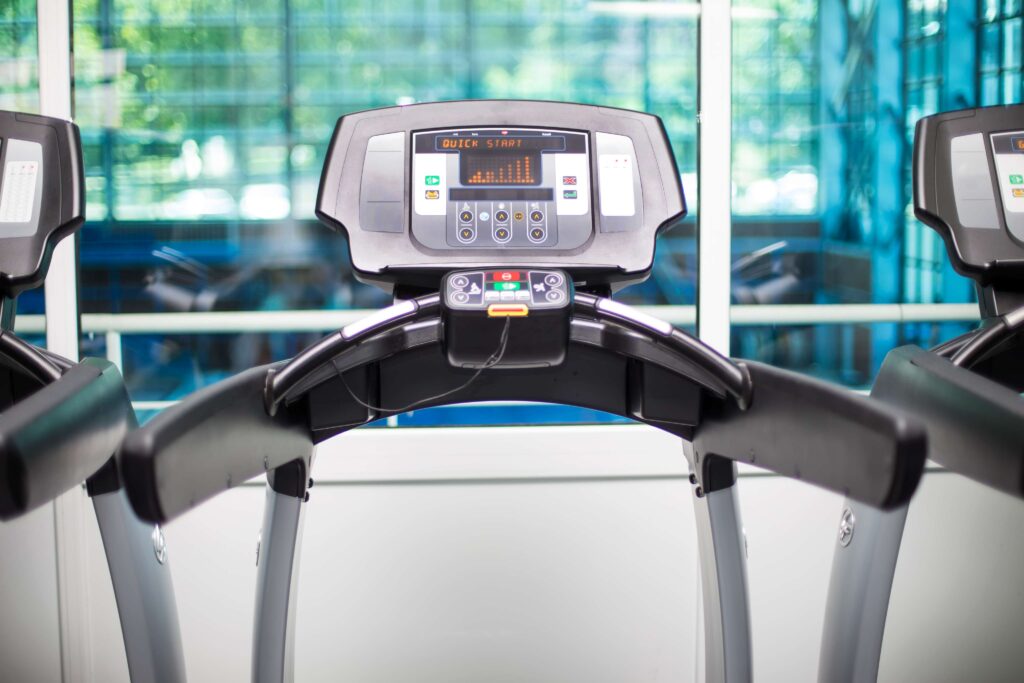
- Variants: Motorised, manual curved, slat belt, rehab treadmills
- Muscles worked: Glutes, hamstrings, calves, quads, core
- Training goals: Steady-state cardio, walking programmes, HIIT sprints
- Space footprint: 2–3 m² per unit, plus clearance at the rear
- Ideal users: General population, rehab clients, runners
- Cost range: £1,500–£8,000+ depending on features and durability
- Maintenance: Regular belt lubrication, console calibration, motor checks
- Institutional use: Ideal for school PE programmes, rehab centres, staff wellness rooms
Elliptical Trainer
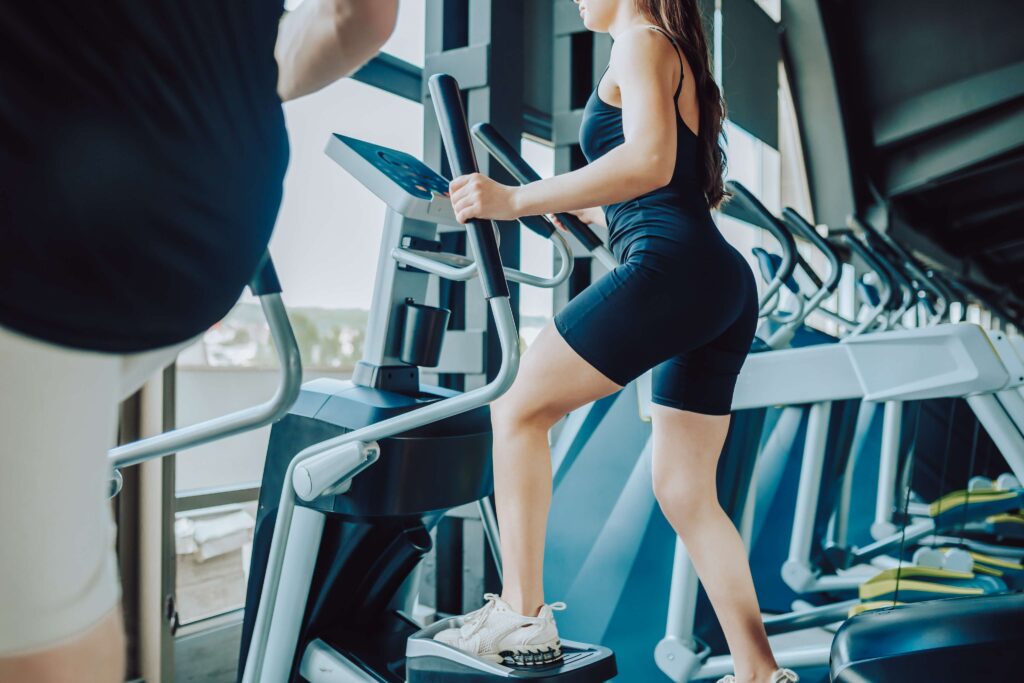
- Variants: Rear-drive, front-drive, centre-drive, cross-trainers with arm levers
- Muscles worked: Glutes, quads, hamstrings, calves, arms, shoulders
- Training goals: Low-impact endurance, cross-training, cardio for joint-sensitive users
- Space footprint: 2.5 m² per unit with stride clearance
- Ideal users: Seniors, beginners, rehab clients, athletes during deload phases
- Cost range: £1,000–£6,000
- Maintenance: Track lubrication, screen software updates, pedal integrity
- Institutional use: Excellent for inclusive fitness programmes or low-impact conditioning
Rowing Machine
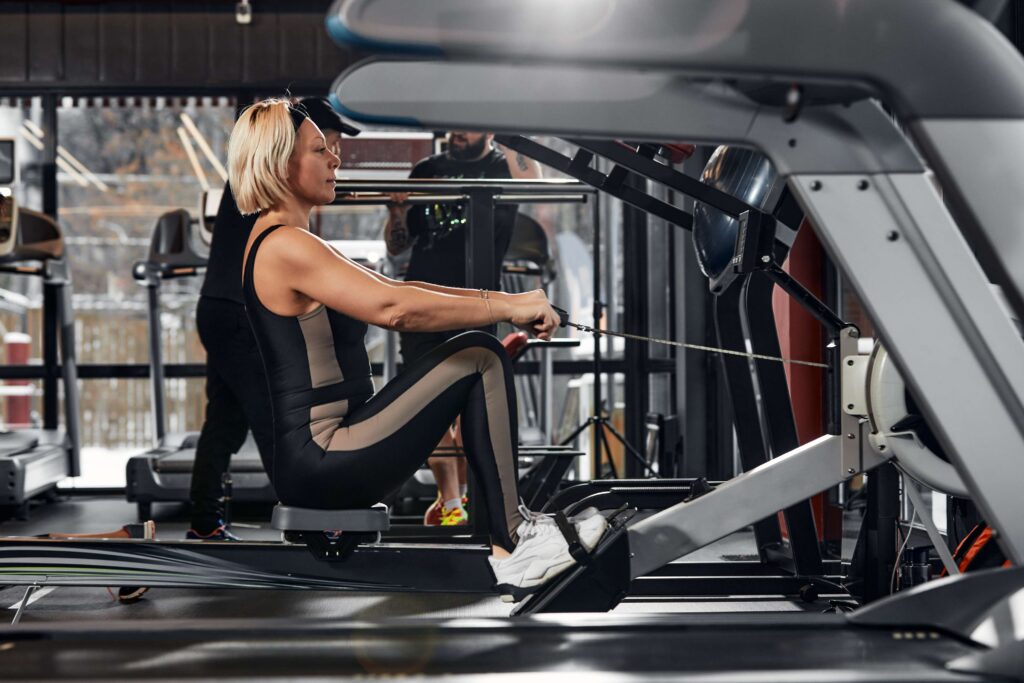
- Variants: Air, magnetic, water resistance, hydraulic
- Muscles worked: Legs, back, shoulders, arms, core
- Training goals: Full-body endurance, high-intensity intervals, metabolic conditioning
- Space footprint: 2.5–3 m², some foldable options available
- Ideal users: Athletes, circuit trainees, those seeking full-body cardio
- Cost range: £800–£2,500
- Maintenance: Chain oiling, seat roller checks, resistance calibration
- Institutional use: Popular in school rowing programmes, CrossFit boxes, sports academies
Air Bike (Fan Bike)
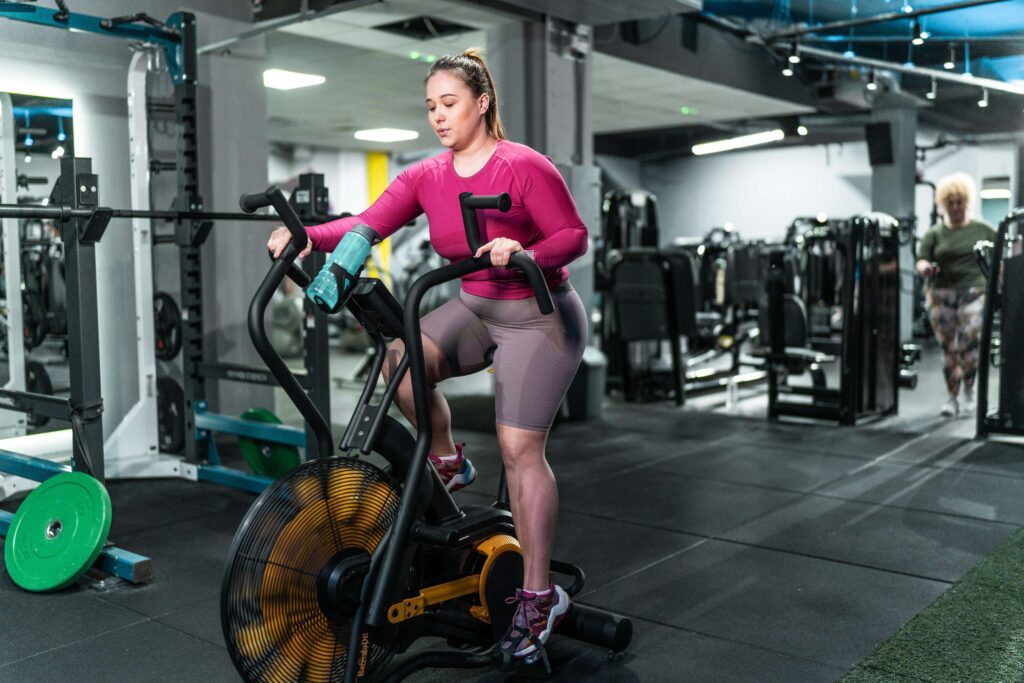
- Variants: Upright fan bike, belt-driven, chain-driven
- Muscles worked: Full body – arms, legs, core
- Training goals: Anaerobic power, metabolic conditioning, HIIT
- Space footprint: 1.5–2 m²
- Ideal users: Athletes, high-intensity circuit users, combat sports
- Cost range: £700–£1,800
- Maintenance: Fan cleaning, chain tension, frame bolt checks
- Institutional use: Suited to sports performance labs, small-group PT zones
Spin Bike (Indoor Cycle)
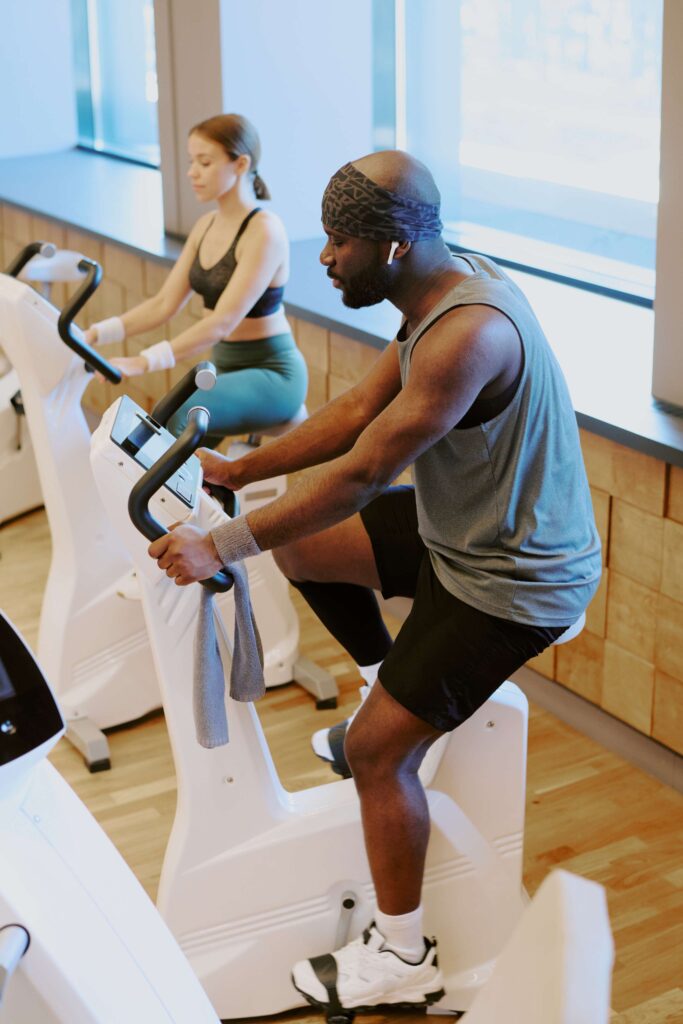
- Variants: Magnetic resistance, belt drive, touchscreen models
- Muscles worked: Quads, hamstrings, glutes, calves, core
- Training goals: Endurance rides, sprints, rhythm-based group classes
- Space footprint: ~1.5 m² per unit, plus clearance for group formats
- Ideal users: Class participants, cyclists, general cardio users
- Cost range: £500–£3,000+
- Maintenance: Resistance system checks, pedal tightening, seat/saddle condition
- Institutional use: Common in campus spin studios, wellness centres, and youth programmes
Stair Climber (Stepper)

- Variants: StepMill (rotating stairs), pedal steppers, mini climbers
- Muscles worked: Glutes, hamstrings, calves, quads, core
- Training goals: Vertical cardio, lower-body strength endurance
- Space footprint: 2–3 m² depending on model height
- Ideal users: Advanced gym-goers, sports teams, functional fitness trainees
- Cost range: £2,500–£9,000+
- Maintenance: Motor inspection, step calibration, console updates
- Institutional use: Effective for team sport athletes, lower-body conditioning programmes
Cardio machines tend to draw the highest footfall in most gyms, making their placement and maintenance a top priority.
Units positioned near entrances, windows or open walkways encourage regular use and reduce perceived effort for new members.
Strength Machines
Strength machines guide users through fixed movement patterns, making resistance training safer, more accessible, and easier to teach at scale.
Unlike free weights, these machines reduce the risk of form breakdown, helping users build strength with consistency.
They’re ideal for beginners, rehab programmes, and circuit training areas where flow and safety are essential.
Leg Press
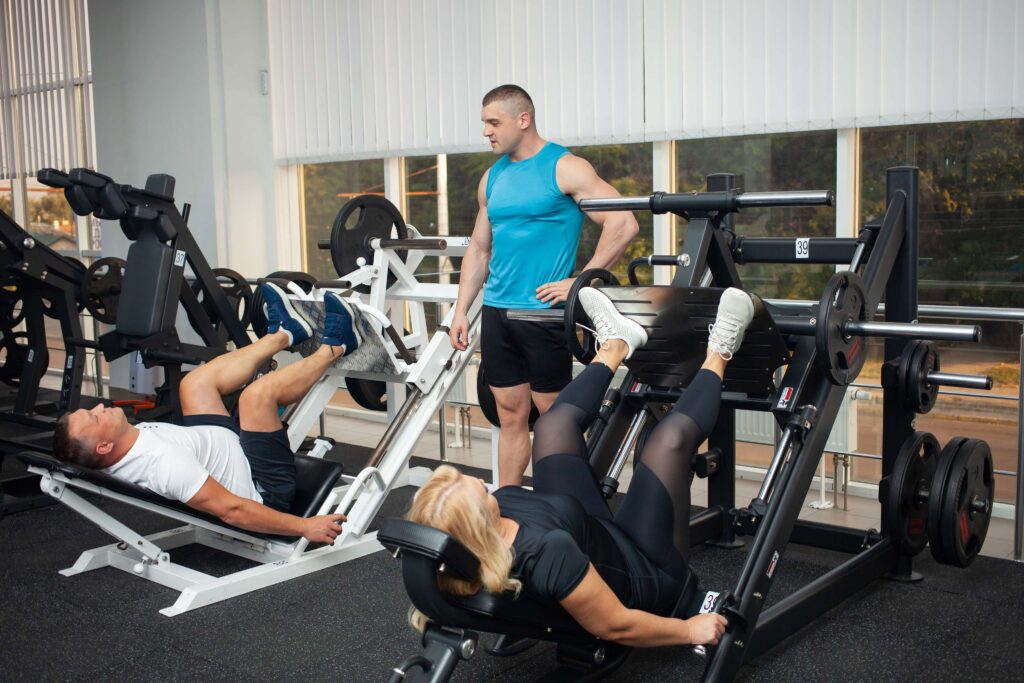
- Movement: Push
- Muscles targeted: Quads, glutes, hamstrings, calves
- Adjustability: Seat angle, backrest, and footplate position
- Maintenance: Weekly frame checks, monthly roller inspections, clean track rails
- Layout tip: Works well in lower-body clusters or PT zones for assisted coaching
Lat Pulldown
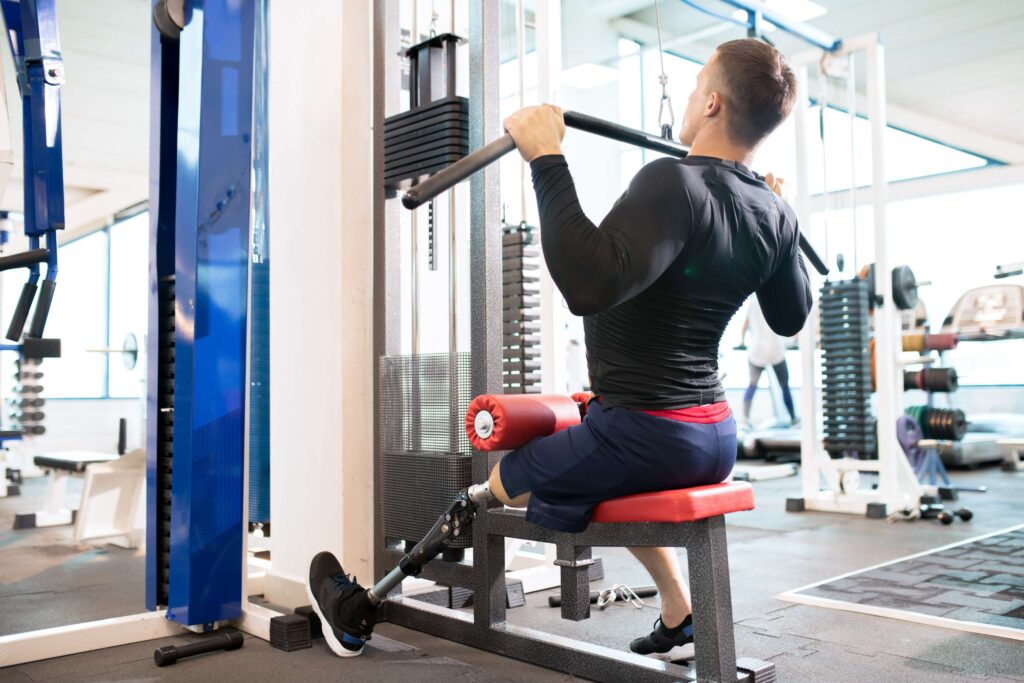
- Movement: Pull
- Muscles targeted: Lats, rhomboids, biceps, rear deltoids
- Adjustability: Thigh pad height, seat position, grip attachment options
- Maintenance: Cable tension checks, pulley lubrication, pad wear
- Layout tip: Common in upper-body zones or near cable stations for supersetting
Chest Press
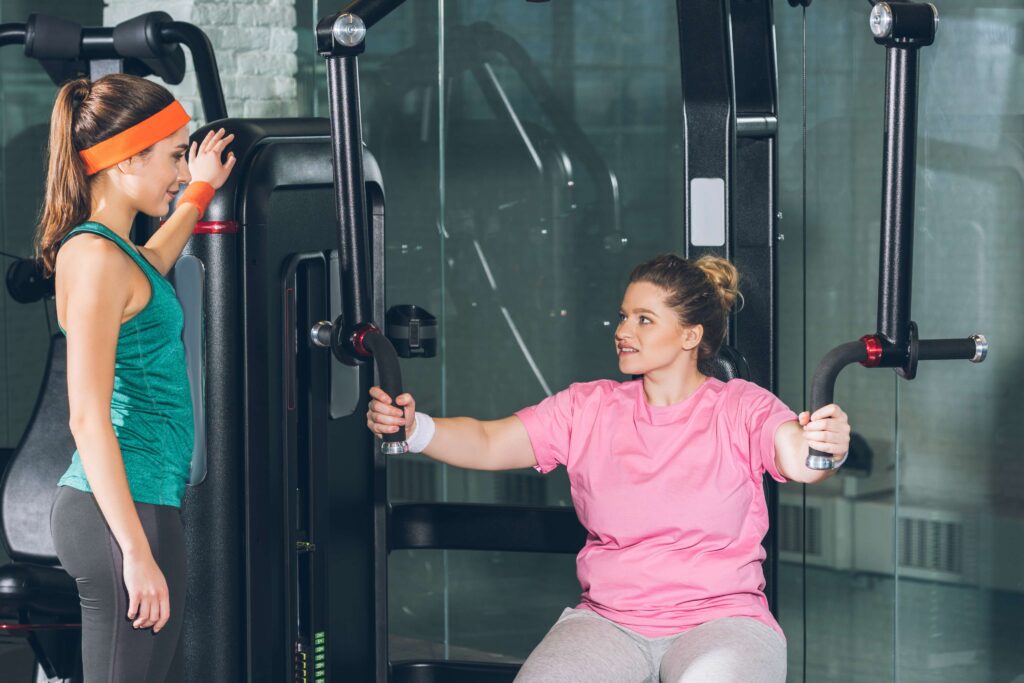
- Movement: Push
- Muscles targeted: Pectorals, triceps, front deltoids
- Adjustability: Handle start position, seat height, back angle
- Maintenance: Pad condition, joint alignment, frame stability
- Layout tip: Position near dumbbell benches for progression or comparison
Cable Crossover
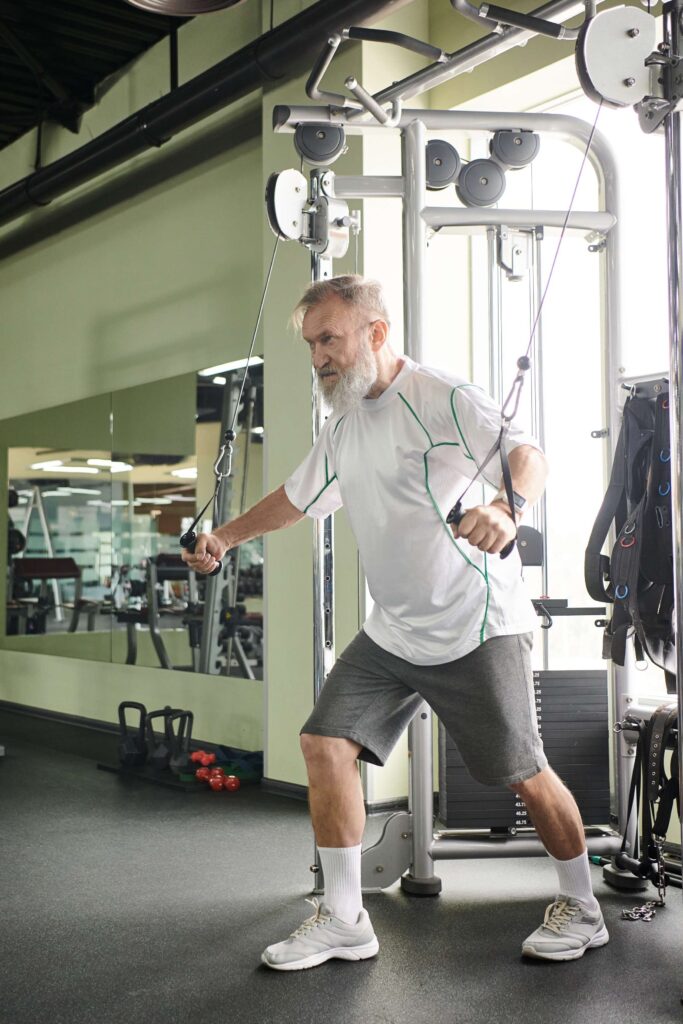
- Movement: Pull (multi-plane)
- Muscles targeted: Chest, shoulders, arms, core
- Adjustability: Pulley height, handle types, resistance level
- Maintenance: Pulley lubrication, cable wear, frame bolt checks
- Layout tip: Ideal in functional strength zones, with open space for movement variety
Smith Machine
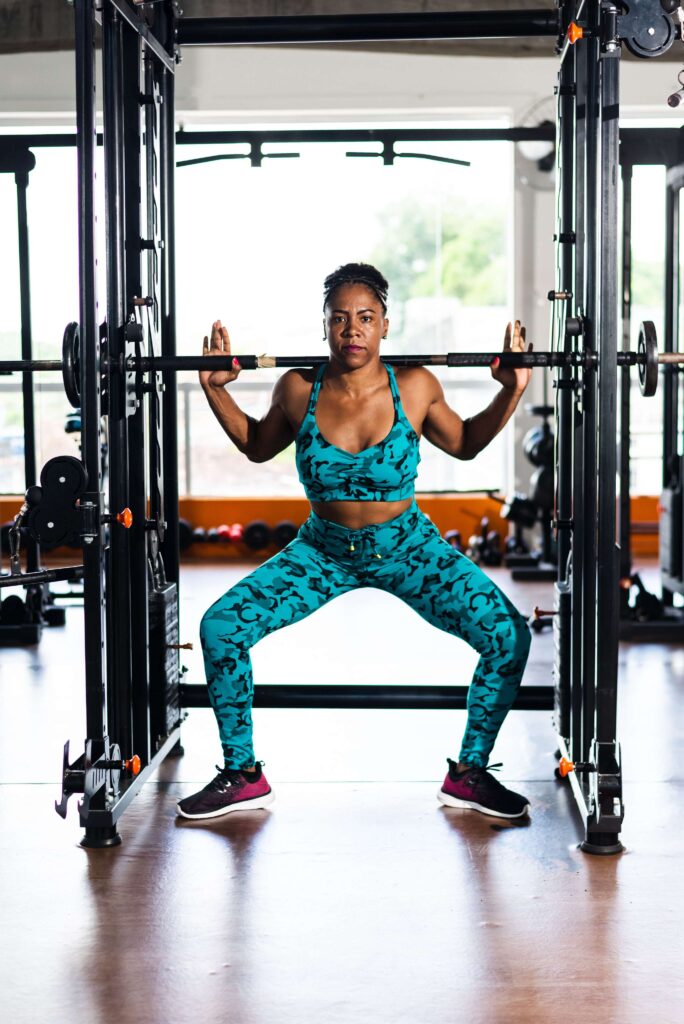
- Movement: Push, hinge, squat
- Muscles targeted: Depends on exercise—commonly chest, legs, glutes, shoulders
- Adjustability: Bar start height, bench angle (if used)
- Maintenance: Track lubrication, stop mechanism checks, bar sleeve inspection
- Layout tip: Versatile for small-group PT or space-constrained weight rooms
Leg Curl Machine
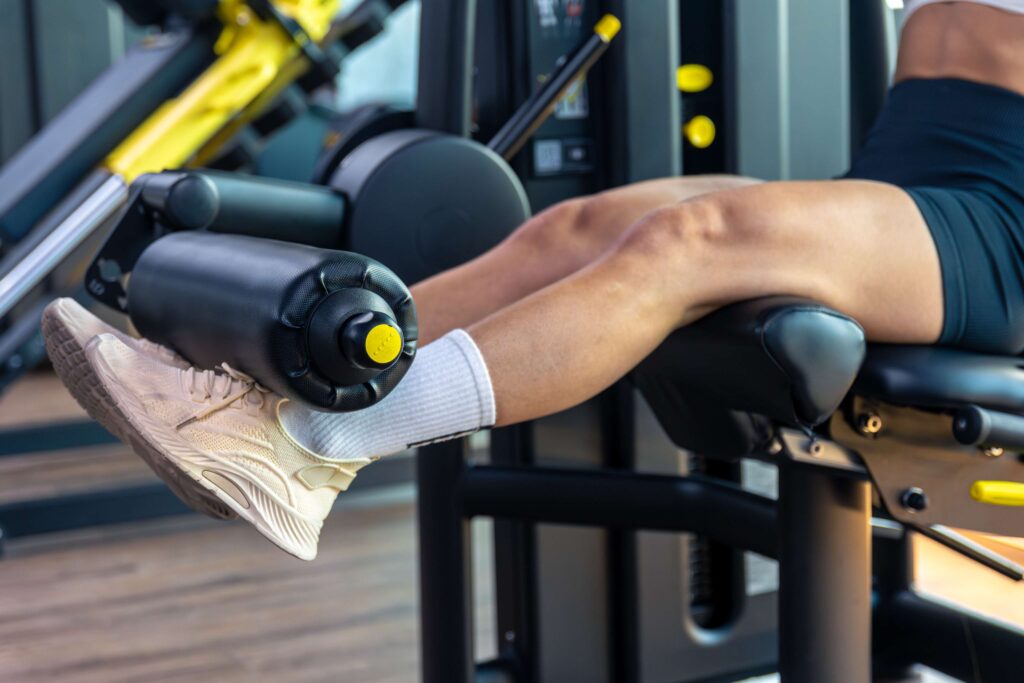
- Movement: Pull (isolation)
- Muscles targeted: Hamstrings
- Adjustability: Back pad, ankle roller, range limiter
- Maintenance: Pad wear, cable checks, tension settings
- Layout tip: Useful in lower-body zones or rehab areas with assisted supervision
Leg Extension Machine
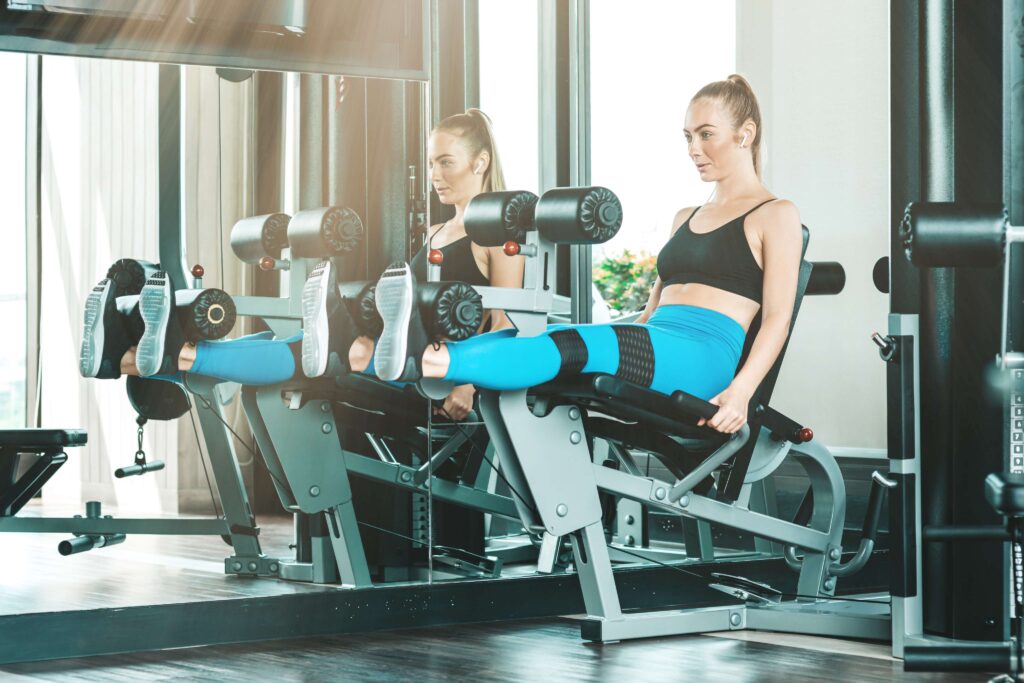
- Movement: Push (isolation)
- Muscles targeted: Quadriceps
- Adjustability: Seat depth, backrest, shin roller
- Maintenance: Roller condition, alignment checks, frame tension
- Layout tip: Often paired with leg curl for symmetry and flow
Seated Row Machine
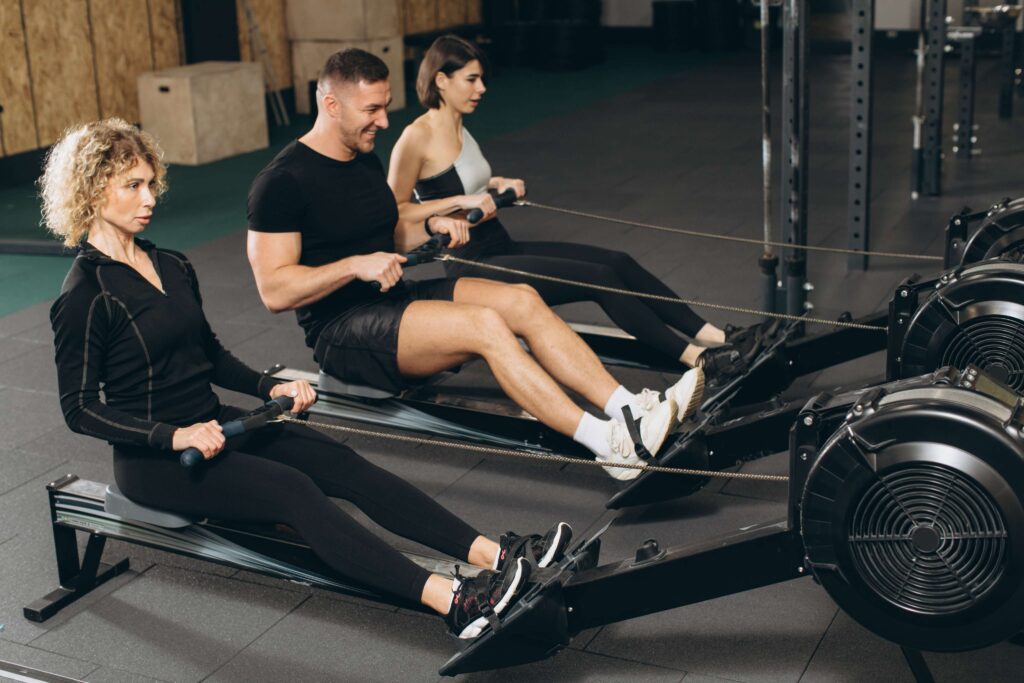
- Movement: Pull
- Muscles targeted: Lats, rhomboids, biceps, posterior deltoids
- Adjustability: Chest pad, seat height, handle grips
- Maintenance: Handle and cable wear, seat stability, footplate bolts
- Layout tip: Ideal near lat pulldowns or other back-focused machines
Strength machines support consistent progress while helping reduce injury risk, particularly for new members or those returning to training after time away.
By grouping them logically, push with push, pull with pull, you can design intuitive circuits and reduce trainer time spent on orientation.
Free Weights
Free weights form the foundation of strength training across all levels, from general fitness to high-performance sport.
Unlike fixed-path machines, they allow for natural movement patterns and full-body engagement.
This freedom supports functional training, progressive overload, and better coordination, making free weights essential for any serious facility.
Barbell
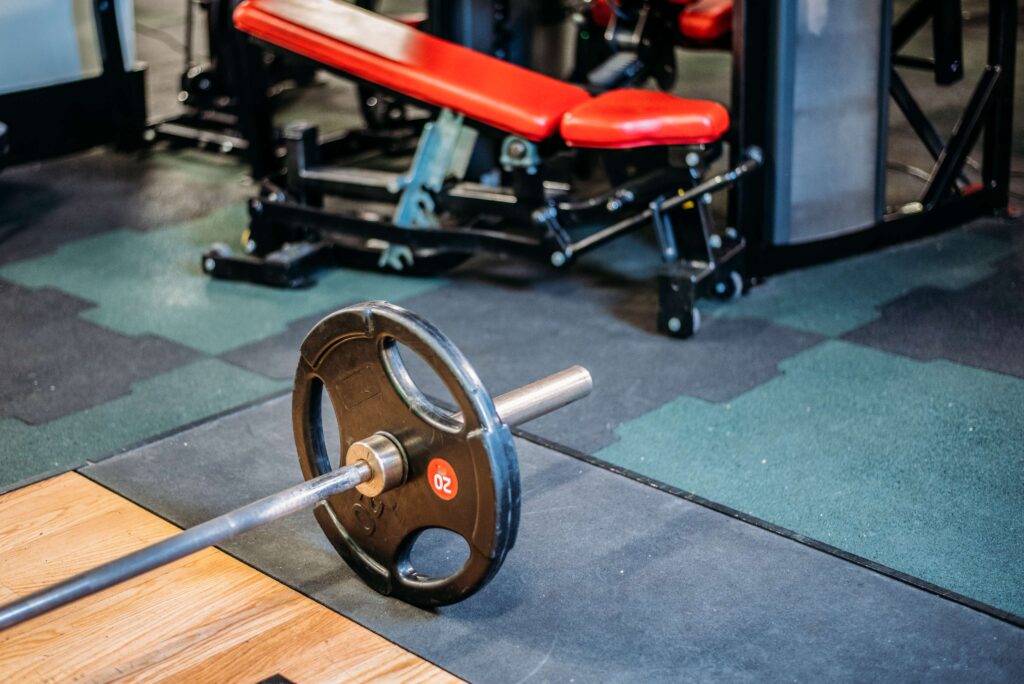
- Types: Olympic (20kg), training (15kg), technique (5–10kg)
- Sizes and finish: 1.8–2.2m length, finishes include chrome, stainless steel, or black zinc
- Best for: Compound lifts—deadlifts, squats, presses, Olympic lifts
- Maintenance: Weekly wipe-downs, occasional oiling, collar and sleeve checks
- Pair with: Squat rack, power cage, bumper or iron plates
Dumbbell
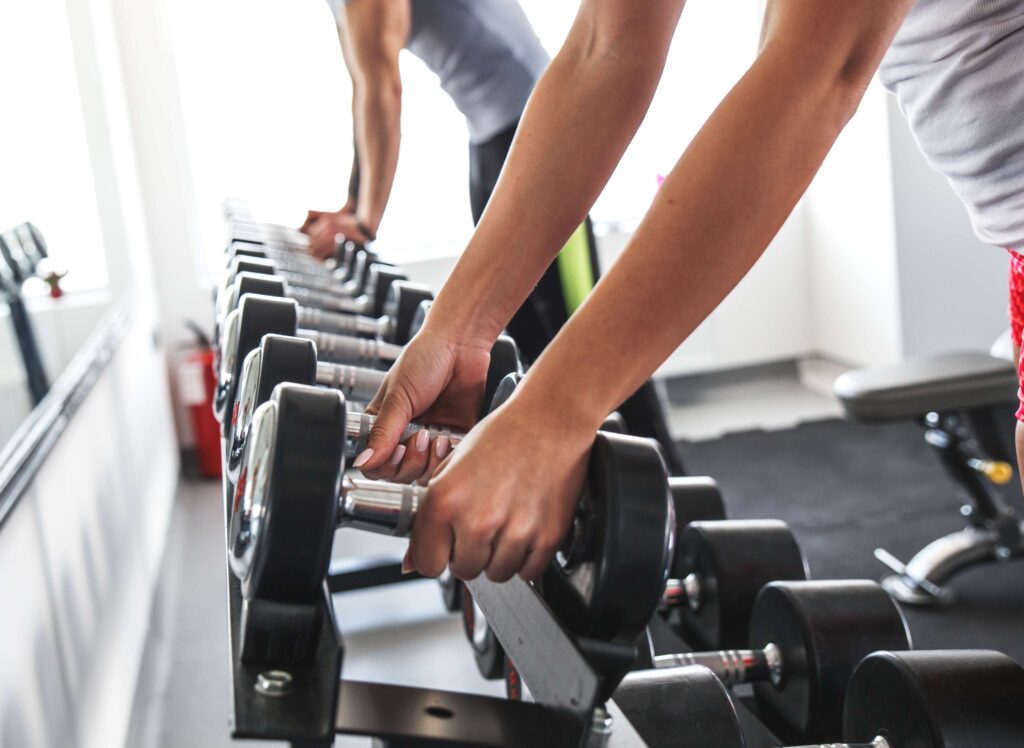
- Types: Fixed-weight (hex, round), adjustable
- Sizes and finish: Typically 1kg–50kg, in rubber, steel, or urethane
- Best for: Isolation movements, full-body circuits, PT sessions
- Maintenance: Handle checks, rack cleanliness, rubber inspection for cracks
- Beginner tip: Start with rubber hex dumbbells for durability and grip
Kettlebell
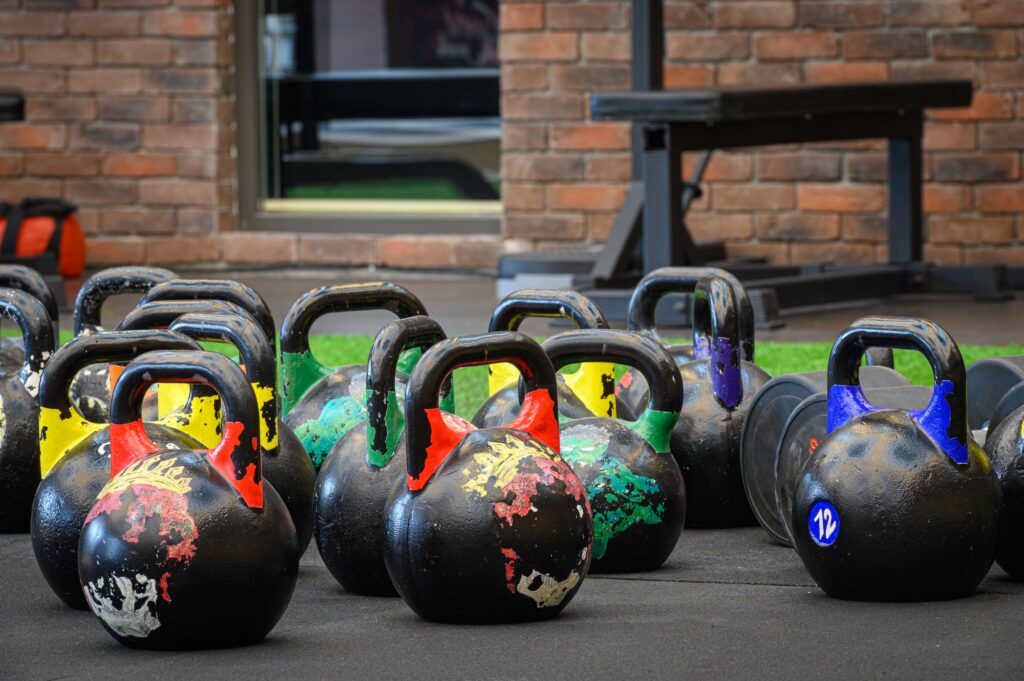
- Types: Cast iron, competition (uniform size)
- Sizes and finish: 4kg–48kg, powder-coated, painted, or vinyl-dipped
- Best for: Swings, cleans, snatches, unilateral strength work
- Maintenance: Handle condition, rust prevention, chalk residue cleaning
- Ideal for: Functional zones, rehab, or small-group circuits
Weight Plates
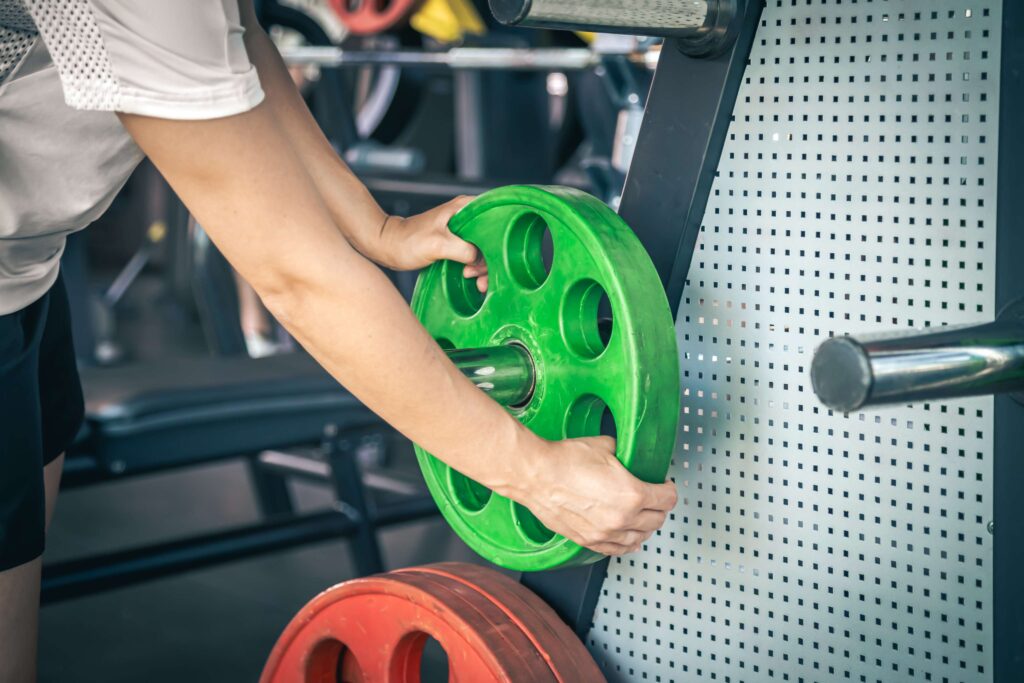
- Types: Bumper (rubber), iron, urethane-coated
- Sizes and finish: 1.25kg to 25kg, solid colour or colour-coded
- Best for: Barbell loading, sled training, plate-only movements
- Maintenance: Storage hygiene, check for warping, rubber splitting
- Pair with: Olympic barbells, sleds, and vertical plate trees
EZ Curl Bar
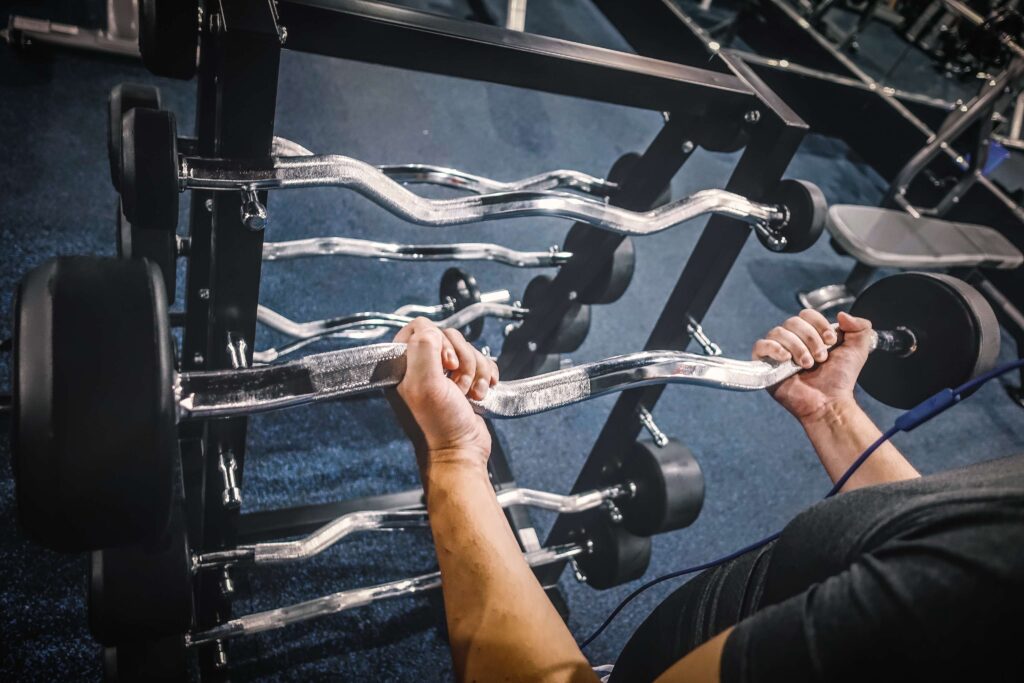
- Types: Standard or Olympic sleeve
- Sizes and finish: 1.2m length, chrome or zinc coating
- Best for: Bicep curls, tricep extensions, wrist-friendly accessory work
- Maintenance: Grip inspection, sleeve cleaning
- Useful for: Reducing elbow stress in upper-body accessory lifts
Squat Rack
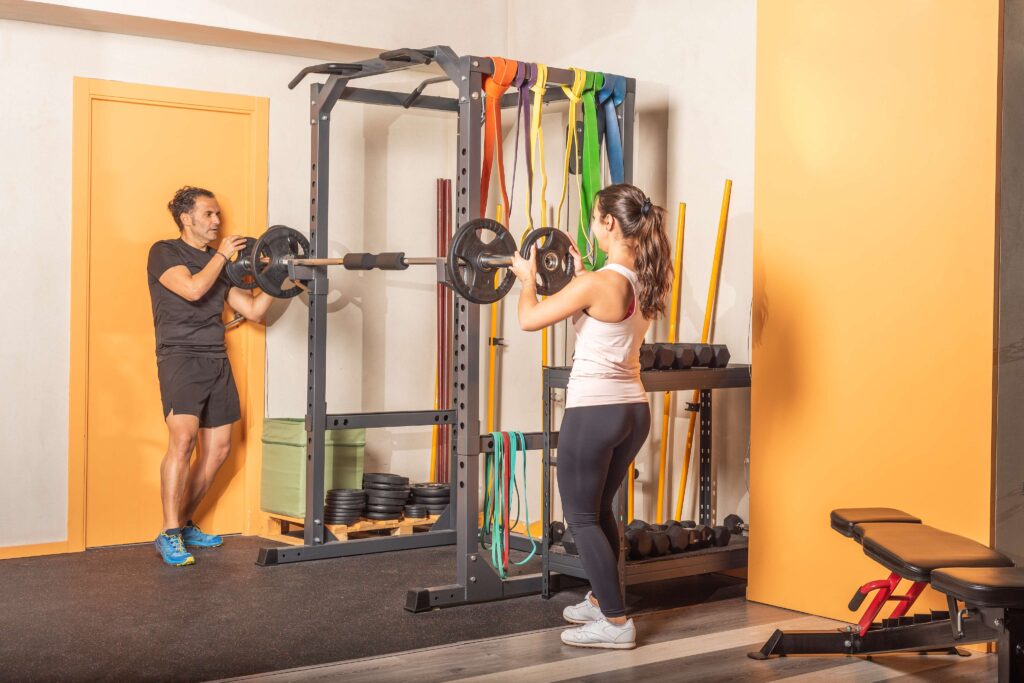
- Types: Stand-alone, wall-mounted, folding
- Sizes and finish: Variable width and height, steel with rubber feet
- Best for: Squats, overhead press, rack-supported lifts
- Maintenance: J-hook checks, frame alignment, surface cleaning
- Great for: Compact setups, school gyms, or space-constrained PT zones
Free weights give users the freedom to train across multiple planes of motion, develop stabilising strength, and follow personalised programmes.
For facility operators, they offer long-term value due to their durability and versatility.
Storing and maintaining them properly, alongside smart layout zoning, reduces clutter, improves safety, and supports member satisfaction.
Functional Training Equipment
Functional training equipment supports full-body movement, athletic conditioning, and real-world strength development.
These tools are highly versatile, often portable, and a staple in small group training, PT sessions, and sports-specific circuits.
They’re also widely used in schools, rehab centres, and performance facilities thanks to their scalability and dynamic training potential.
Battle Ropes
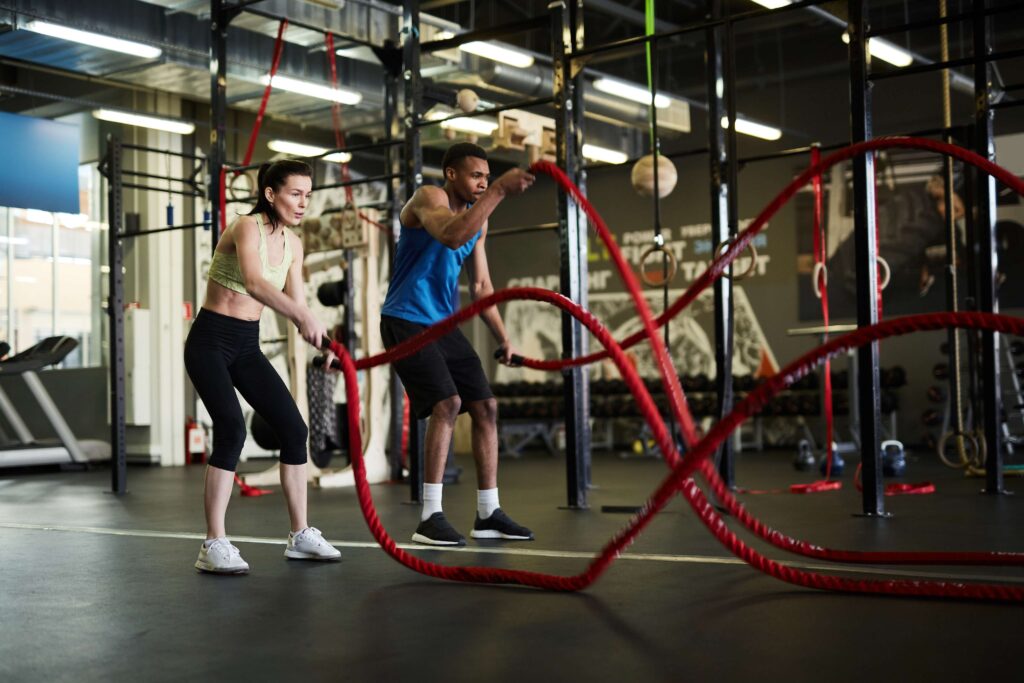
- Use cases: Power intervals, conditioning circuits, grip endurance
- Benefits: Builds shoulder stability, core strength, cardiovascular capacity
- Storage and layout: Anchor in turf zones or against rig frames, store coiled on hooks
- Durability and care: Check for fraying at the anchor point, clean rope sleeves as needed
- Best suited to: PT zones, athlete conditioning, bootcamp-style classes
Resistance Bands
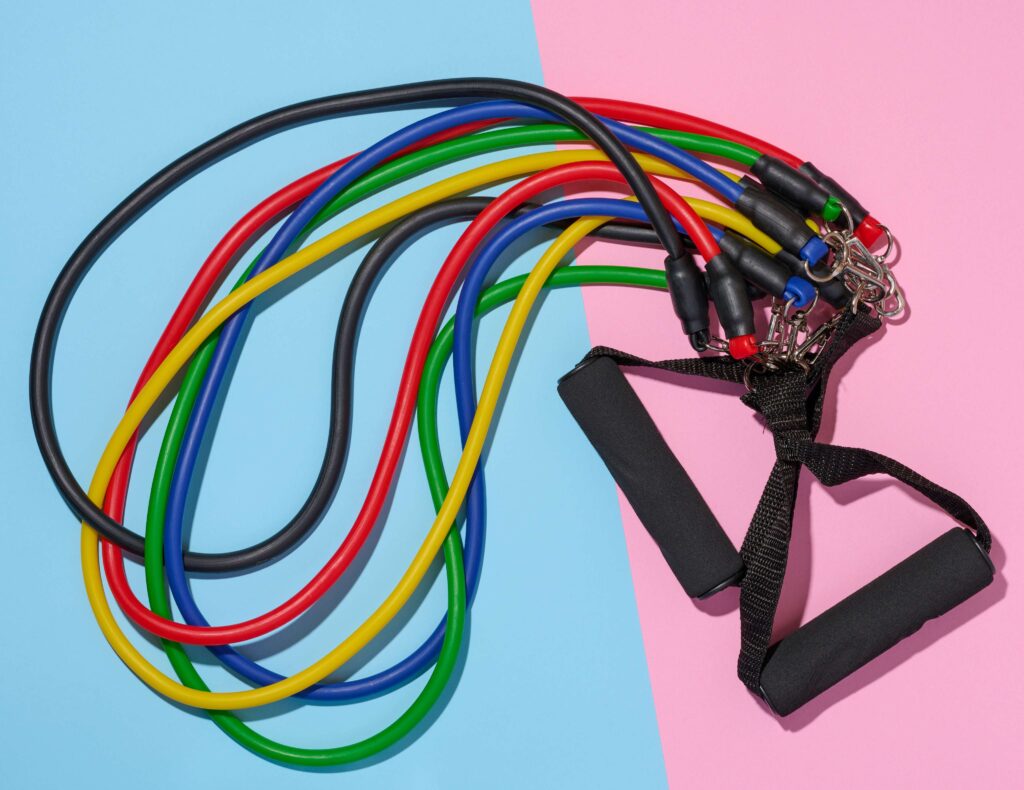
- Use cases: Mobility work, rehab, added resistance for compound lifts
- Benefits: Joint-friendly loading, progressive resistance, portability
- Storage and layout: Wall-mounted pegs or bins, ideal near functional rigs or warm-up areas
- Durability and care: Inspect for cracks or overstretching, clean after outdoor use
- Best suited to: Physio-led sessions, warm-ups, multi-use group formats
TRX / Suspension Trainers
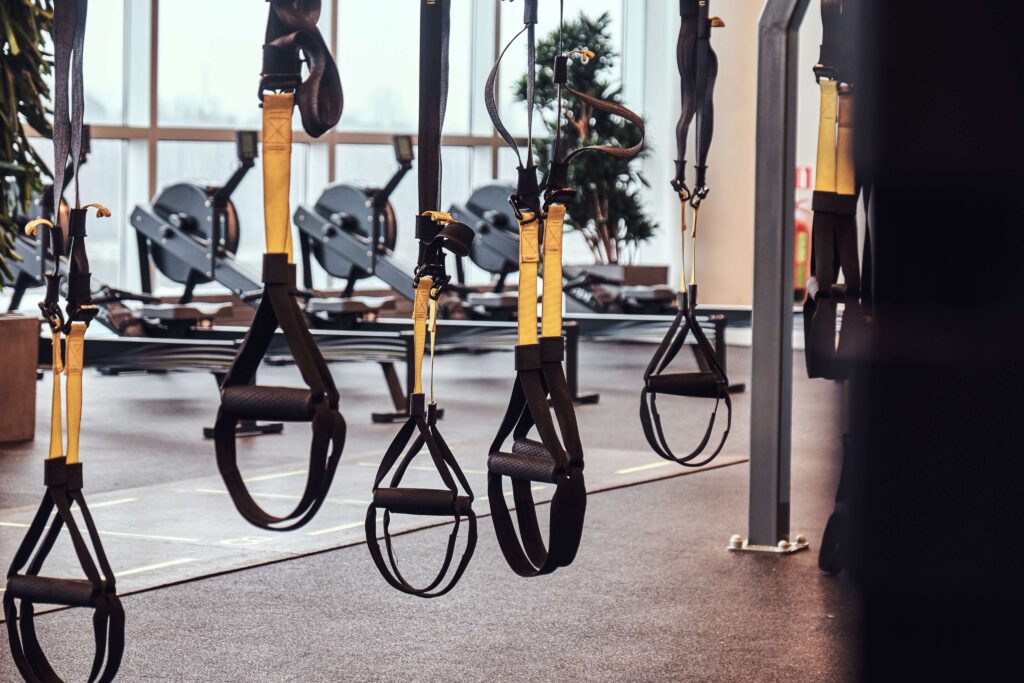
- Use cases: Bodyweight strength, core engagement, rehab progressions
- Benefits: Improves balance, coordination, and midline control
- Storage and layout: Mount to walls, rigs, or ceiling anchors with open floor clearance
- Durability and care: Strap fraying checks, buckle and anchor inspections
- Best suited to: PT, school settings, or anywhere low-impact versatility is needed
Slam Balls
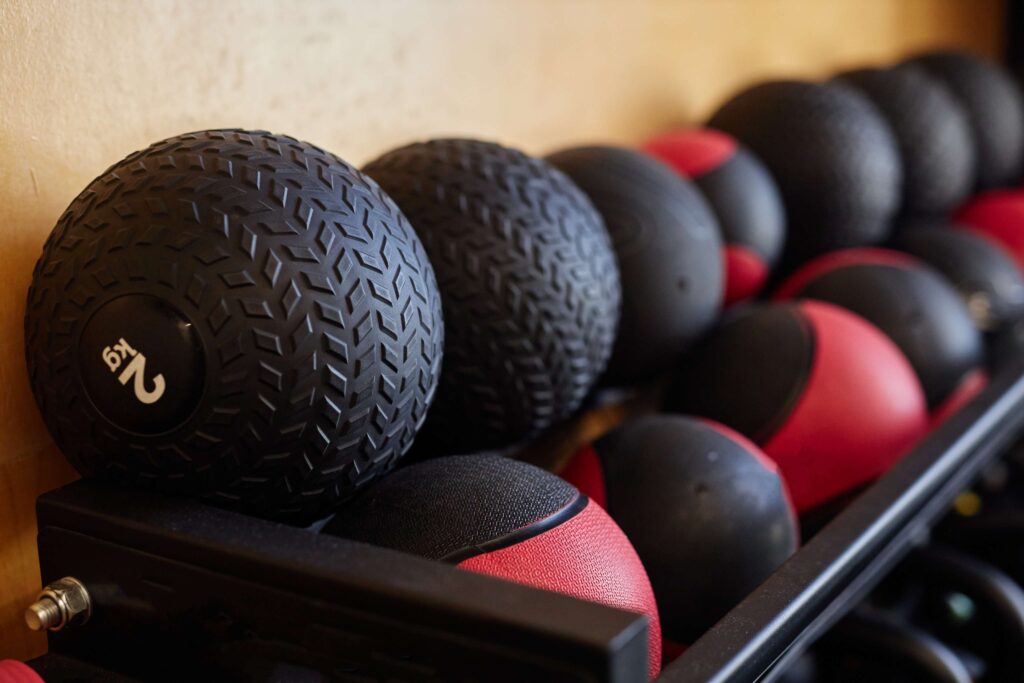
- Use cases: Explosive power training, HIIT, metabolic finishers
- Benefits: Builds trunk strength, power output, safe ballistic movement
- Storage and layout: Place in ball cradles or against turf walls, avoid bounce areas
- Durability and care: Wipe after use, inspect for cracking or leaks
- Best suited to: Sports facilities, small-group circuits, youth strength classes
Medicine Balls
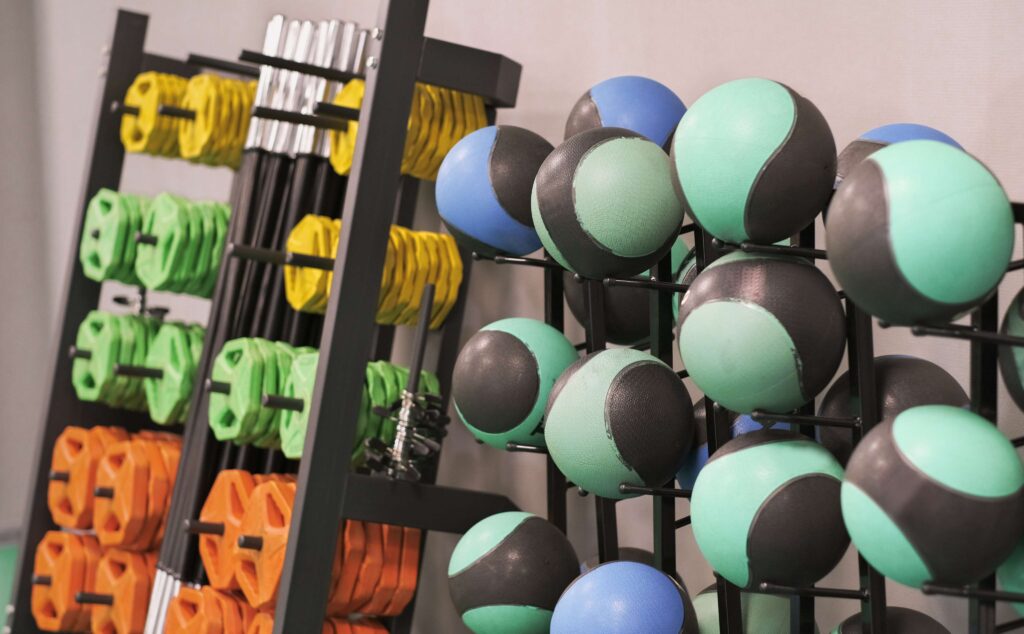
- Use cases: Wall throws, core work, partner drills
- Benefits: Boosts coordination, rotational strength, controlled power
- Storage and layout: Stack in wall ball racks, keep near rebound walls or open space
- Durability and care: Check for stitching wear, surface scuffs, rebound integrity
- Best suited to: Group fitness studios, PE programmes, core zones
Sandbags
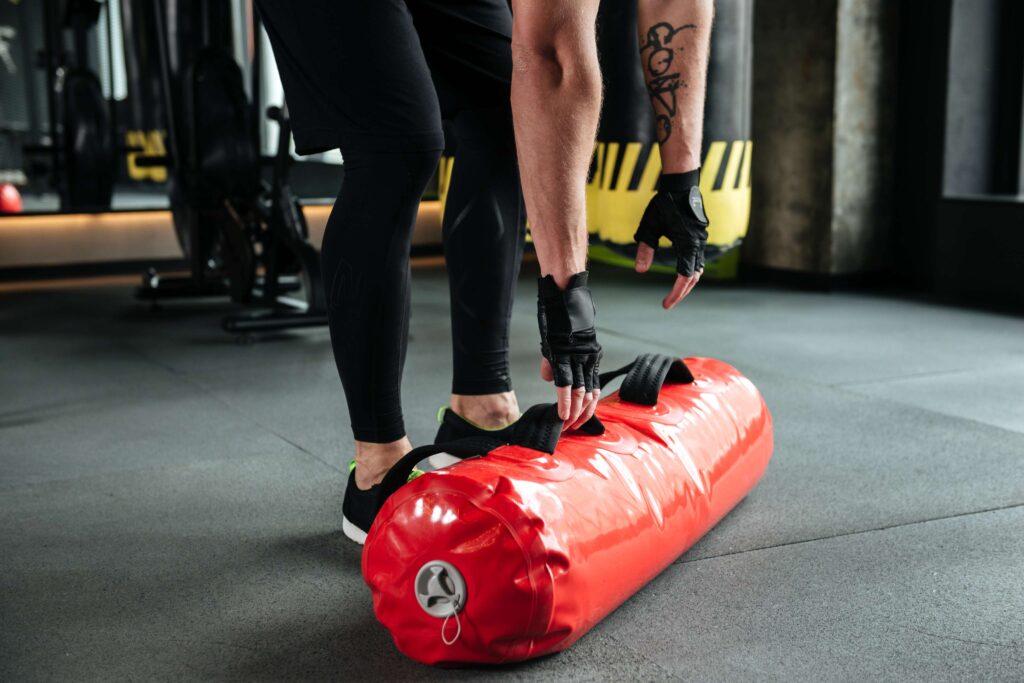
- Use cases: Carries, cleans, squats, rotational lifts
- Benefits: Improves grip, stability, and control under load
- Storage and layout: Keep in bins or turf zones, avoid stacking to prevent shape distortion
- Durability and care: Monitor seams, internal filling distribution, exterior tears
- Best suited to: Tactical training, small-group sessions, hybrid conditioning areas
Plyo Boxes
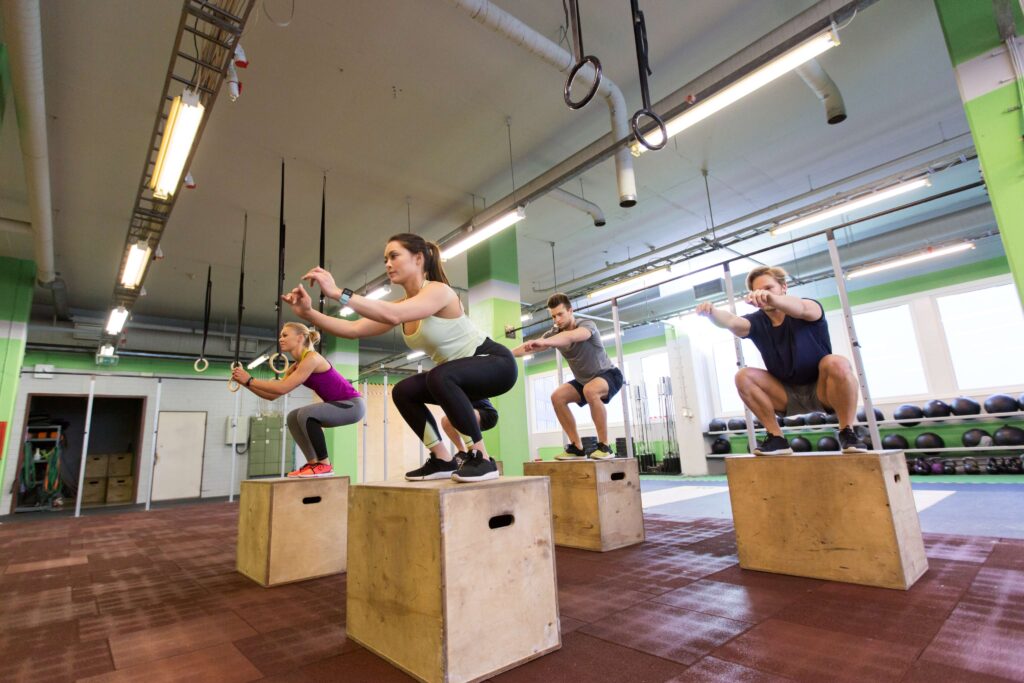
- Use cases: Jump training, step-ups, rehab progressions
- Benefits: Builds lower-body power, agility, and landing mechanics
- Storage and layout: Stackable units stored near turf or functional zones
- Durability and care: Check stability, foam integrity, edge wear
- Best suited to: Athletic training, school gyms, PT-led progressions
Agility Ladders
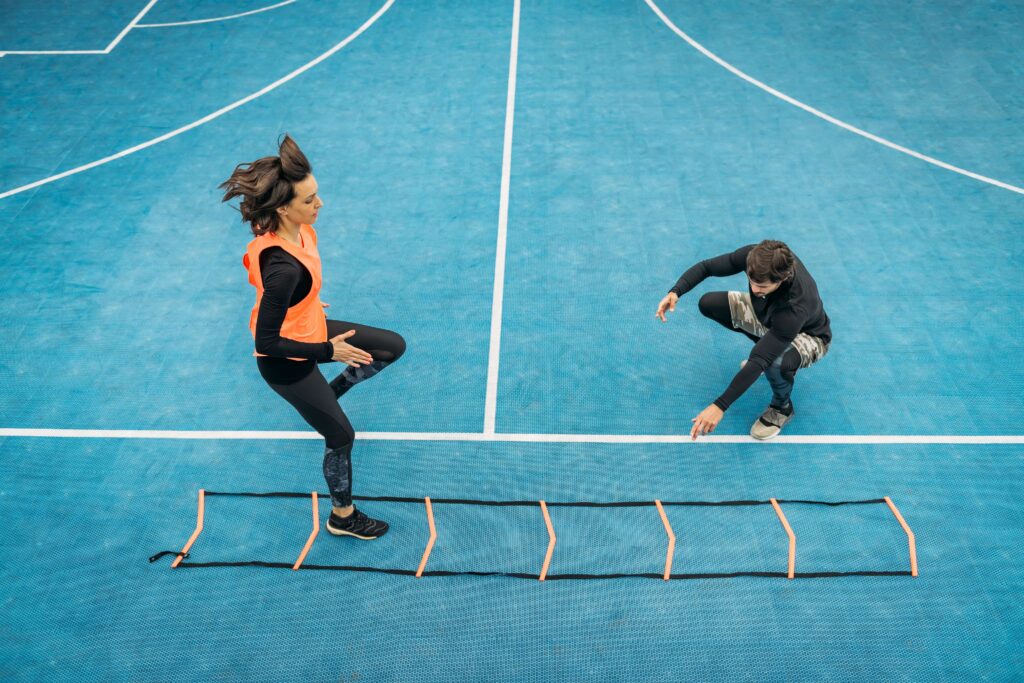
- Use cases: Speed drills, footwork training, warm-ups
- Benefits: Improves coordination, reaction speed, proprioception
- Storage and layout: Roll or fold into bins, use on turf or studio floors
- Durability and care: Inspect for frayed edges or broken rungs
- Best suited to: PE classes, sports academies, warm-up areas
Functional training tools offer variety and adaptability without taking up much space.
By zoning turf areas or open studios with clear storage systems, facilities can support high-energy sessions while keeping foot traffic safe and efficient.
Recovery and Flexibility Equipment
Recovery tools support mobility, injury prevention, and athletic longevity.
They’re essential for cooldowns, stretching routines, and rehab protocols, but often overlooked when planning gym layouts.
Adding the right recovery kit to your space encourages consistent post-training habits, reduces injury risk, and supports better performance across all training levels.
Foam Roller
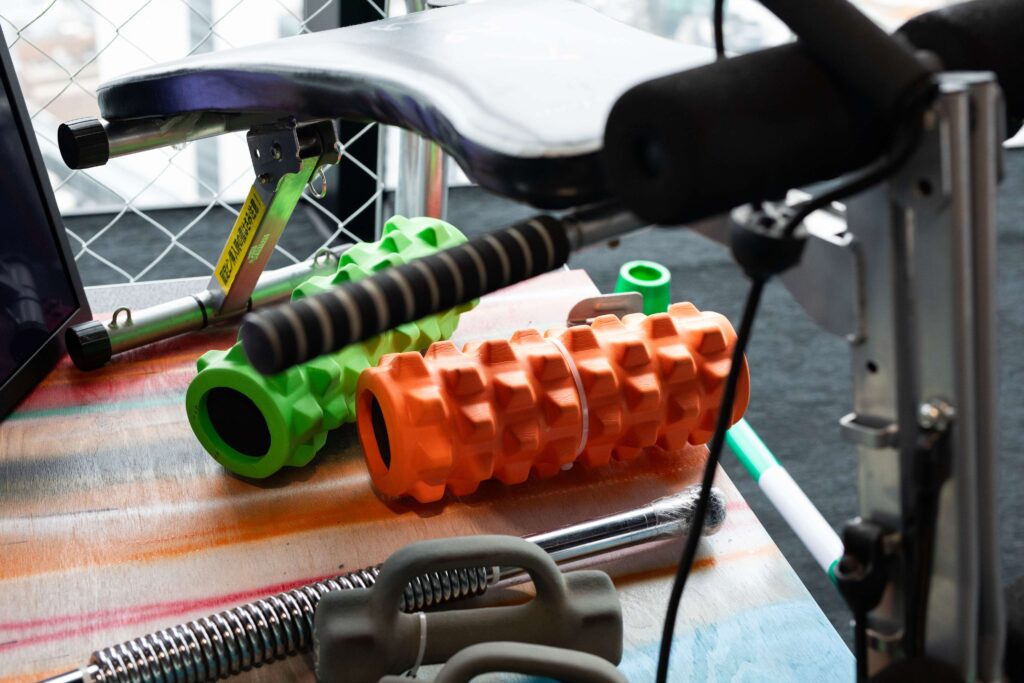
- Use cases: Self-myofascial release, cooldown, warm-up activation
- Performance benefit: Improves circulation, eases muscle tension, promotes recovery
- Usage zones: Stretching areas, physio rooms, turf zones
- Cleaning and care: Wipe after each use, replace if compressed or flaking
- Best suited to: General fitness users, sports teams, PT recovery protocols
Yoga Mat
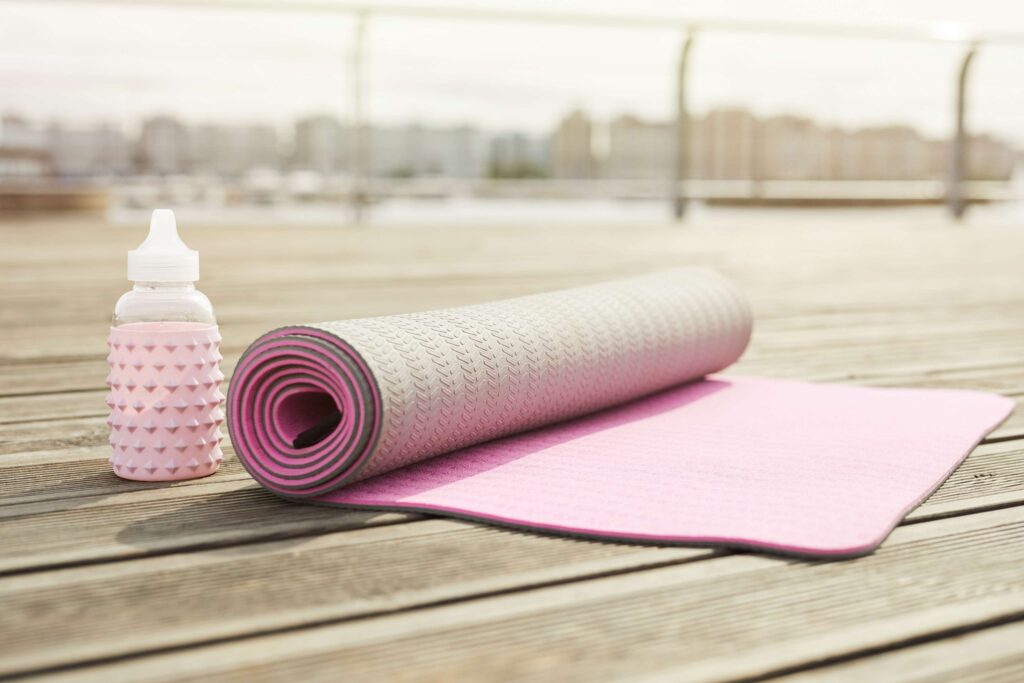
- Use cases: Floor-based stretching, mobility flows, breathwork
- Performance benefit: Supports joint comfort during movement and cooldown
- Usage zones: Wellness studios, recovery corners, hybrid class spaces
- Cleaning and care: Daily disinfecting, replace when edges curl or grip fades
- Best suited to: Schools, wellness programmes, low-impact group sessions
Massage Gun
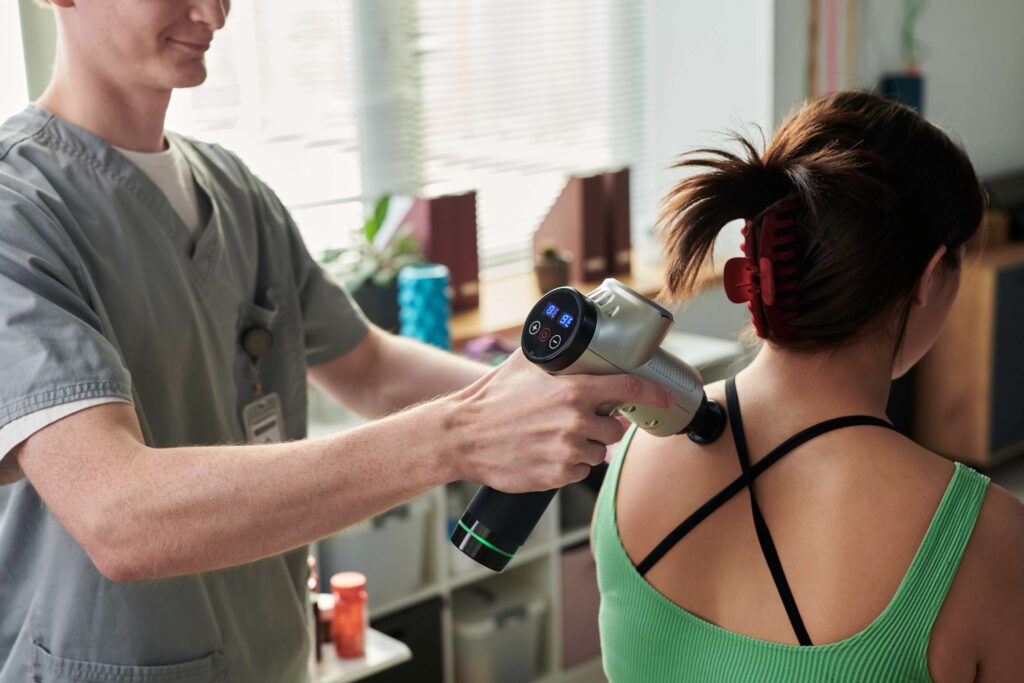
- Use cases: Percussive therapy post-training or between sets
- Performance benefit: Reduces muscle tightness, supports recovery between sessions
- Usage zones: PT offices, mobility zones, warm-up areas
- Cleaning and care: Wipe after each use, check battery and motor monthly
- Best suited to: Sports teams, PTs, physio providers
Trigger Point Ball
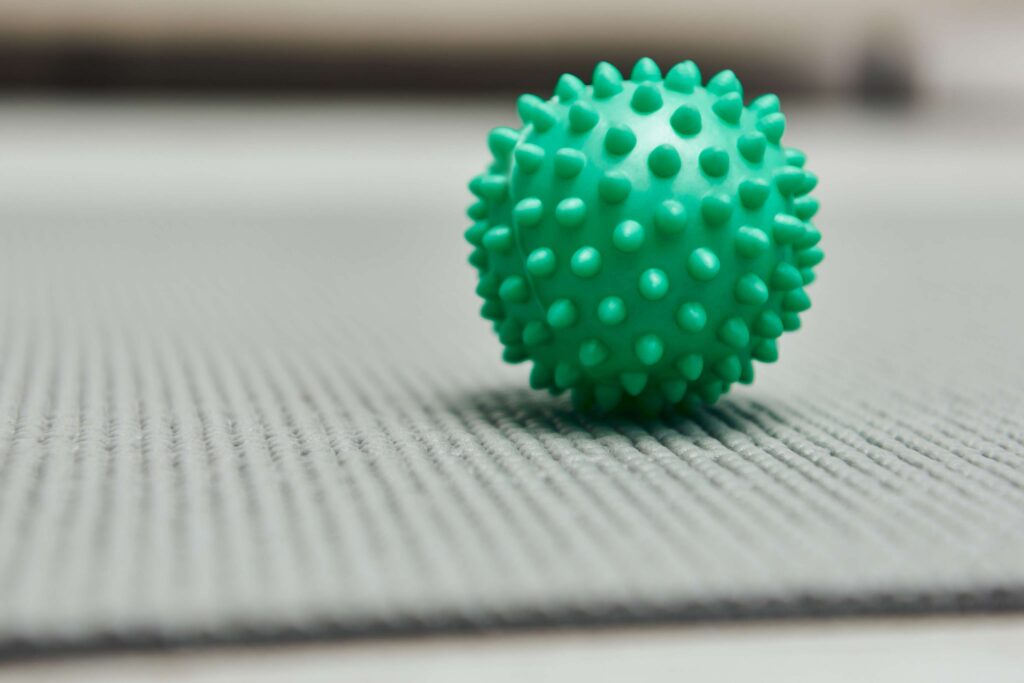
- Use cases: Deep tissue release in glutes, back, shoulders, feet
- Performance benefit: Targets tight spots and improves mobility
- Usage zones: Recovery kits, stretching areas, PT rooms
- Cleaning and care: Wipe regularly, replace when surface wears smooth
- Best suited to: Individual recovery work, post-session cooldowns
Stretch Straps

- Use cases: Assisted hamstring, quad, and shoulder stretches
- Performance benefit: Enhances range of motion without overstraining
- Usage zones: Mat zones, group class cooldowns, rehab setups
- Cleaning and care: Machine washable or wipedown, inspect stitching monthly
- Best suited to: Group cooldowns, mobility sessions, warm-up prep
Allocating a clear recovery zone, whether that’s a quiet corner, PT room, or studio add-on, helps create a culture of longevity and self-care.
These low-cost tools take up minimal space but deliver high value when used consistently.
Planning Your Gym Layout with Equipment Zones
A well-planned gym layout improves safety, training flow, and equipment efficiency.
Grouping machines and tools by training type helps users navigate the space more confidently, reduces congestion during peak times, and makes it easier to manage wear and cleaning schedules.
For operators, zoning also simplifies programming, instructor scheduling, and long-term space planning.
Below is a breakdown of typical zones, their purpose, and key planning considerations for both commercial and educational fitness spaces.
Cardio Zone
- Purpose: Steady-state and interval training for aerobic fitness
- Ideal equipment: Treadmills, bikes, rowers, stair climbers, ellipticals
- Space needs: 2–3 m² per machine with clearance at rear and sides
- Placement logic: Position near windows or entrances to encourage use and manage airflow
- Notes for schools: Choose low-maintenance machines with clear usage instructions for unsupervised PE sessions
Strength Zone
- Purpose: Controlled resistance training via fixed-path machines
- Ideal equipment: Chest press, leg press, lat pulldown, seated row, Smith machine
- Space needs: 2 m² per machine plus 1 m walkway between rows
- Placement logic: Group push/pull or upper/lower body machines for intuitive circuits
- Notes for commercial gyms: Avoid placing high-demand pieces (e.g. leg press) too close together to prevent bottlenecks
Free Weight Zone
- Purpose: Functional and compound strength training using unanchored resistance
- Ideal equipment: Barbells, dumbbells, kettlebells, racks, benches
- Space needs: 3–4 m² per user, including lifting and spotting clearance
- Placement logic: Use rubber flooring, mirrors, and racking systems to define area and promote safety
- Notes for schools: Use lighter, rubberised equipment and ensure supervision where possible
Functional Training Zone
- Purpose: Athletic performance, movement training, small group circuits
- Ideal equipment: Plyo boxes, sandbags, sleds, battle ropes, suspension trainers
- Space needs: Open turf or hardwood space of 20–50 m² depending on group size
- Placement logic: Avoid tight walkways, keep storage accessible, and use visual floor markings if needed
- Notes for mixed-use facilities: Shared use with PE or sports teams may require modular storage and signage
Recovery and Mobility Zone
- Purpose: Stretching, foam rolling, cooldown, and mobility prep
- Ideal equipment: Mats, foam rollers, stretch cages, massage guns, straps
- Space needs: 5–10 m² minimum, ideally in a low-traffic area
- Placement logic: Locate near exits, PT offices, or wellness rooms to encourage use without disrupting traffic
- Notes for commercial gyms: Signage helps normalise recovery routines and improves visibility of underused tools
PT and Coaching Zone
- Purpose: Assessment, coaching, tailored programming
- Ideal equipment: Adjustable benches, small racks, resistance bands, whiteboard, tablet or console
- Space needs: 10–15 m² per trainer, ideally separated from the main floor
- Placement logic: Allow visibility into gym while keeping it distinct to reduce distractions
- Notes for schools and studios: Can double as a small-group coaching space with minimal setup
Layout Planning Tips
- Leave at least 1 m of clear space around each fixed machine or lifting station
- Use flooring changes (e.g. turf, rubber, studio wood) to signal zones clearly
- Position high-traffic zones (cardio, dumbbells) near entrances for ease of access
- Cluster low-noise areas (recovery, PT) away from high-intensity zones to reduce disruption
- In schools or multi-use spaces, opt for mobile or foldable equipment to maintain flexibility
FAQs About Gym Equipment
What is the most essential gym equipment for beginners?
For most beginners, a combination of cardio machines, fixed-path strength machines, and light free weights provides the right balance of safety and progression. Treadmills, leg press machines, and dumbbells in the 2–10 kg range are common starting points.
What machines burn the most calories?
Rowing machines, air bikes, and stair climbers are among the most efficient for calorie burn due to their full-body engagement and adjustable intensity. These machines support both steady-state and interval training formats.
What gym equipment is best for small spaces?
Compact cardio units, wall-mounted suspension trainers, adjustable dumbbells, and resistance bands offer high versatility without taking up much floor space. These tools work well in PT studios, school gyms, and hybrid training zones.
How do I maintain commercial gym equipment?
Create a maintenance schedule based on equipment category and usage. Weekly tasks include cleaning pads, wiping consoles, and checking cables. Monthly or quarterly checks may involve lubrication, alignment, and software updates. EZFacility can help automate these reminders and log service history.
What’s the difference between free weights and machines?
Free weights allow natural movement paths and activate stabiliser muscles, making them ideal for functional strength. Machines offer guided resistance with built-in safety, which is useful for beginners or rehab settings. Both have a place in a balanced gym layout.
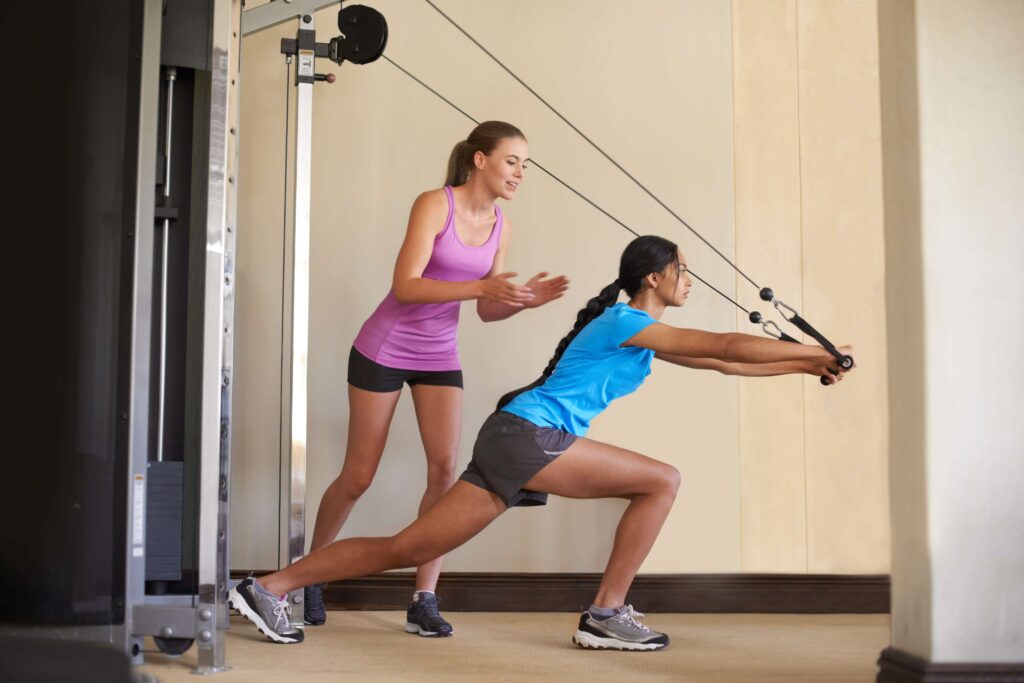
How EZFacility Delivers on What Matters Most
Equipping your gym is just one part of running a successful fitness business. Keeping it organised, safe, and profitable requires the right systems behind the scenes.
EZFacility helps you do exactly that, giving you visibility into equipment usage, automating maintenance schedules, streamlining bookings, and aligning your layout with member behaviour.
From single-site studios to large-scale sports complexes, EZFacility brings all your operations into one place.
Track what gets used, when and by whom. Flag underutilised zones. Identify where to invest next.
And do it all without spreadsheets or guesswork.
See EZFacility in Action
Looking to improve how you manage your gym space, equipment zones, and day-to-day operations? Book a one-on-one gym management software demo today and discover how EZFacility supports confident decision-making and sustainable growth.
Related Articles for Gym Owners
- The Ultimate Gym Cleaning Checklist for 2025
- Gym Insurance: The Complete Guide for Gym Owners
- 9 Must-Have Gym Software Features to Streamline and Grow Your Fitness Business
